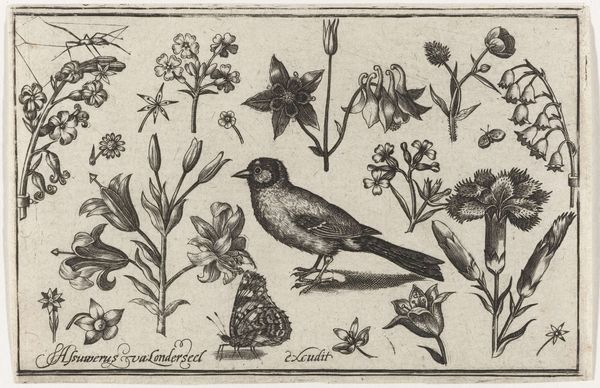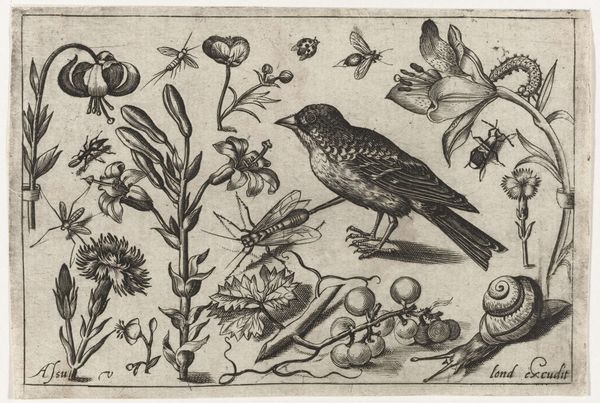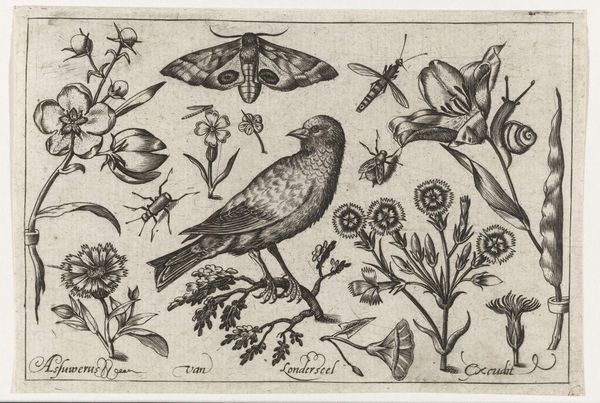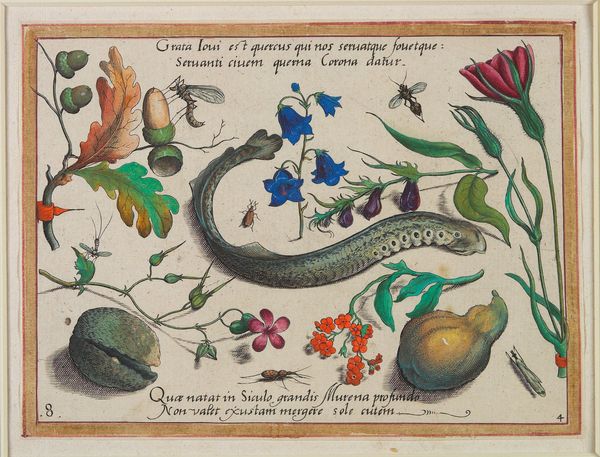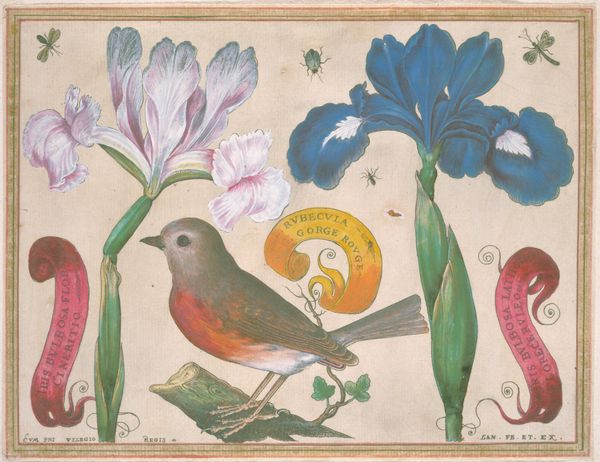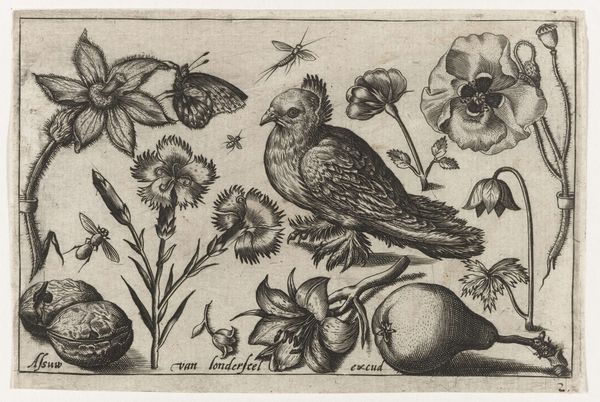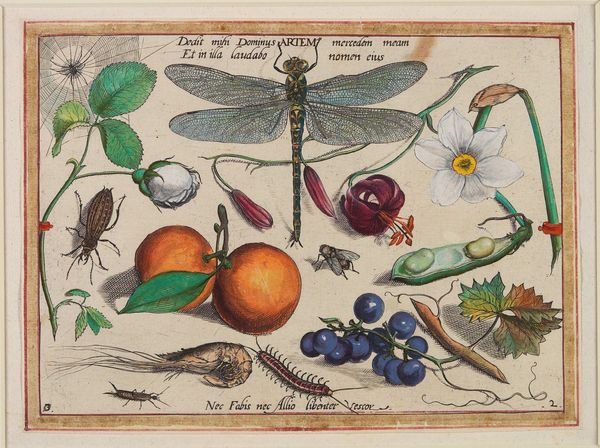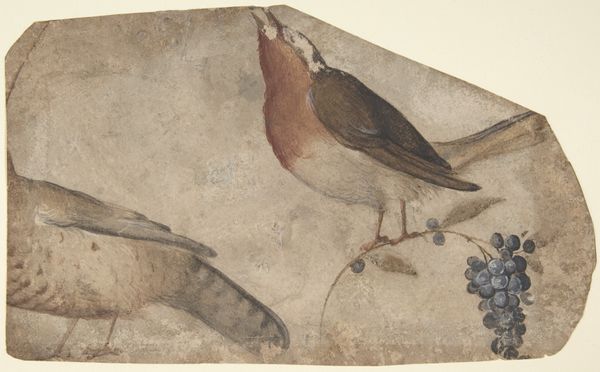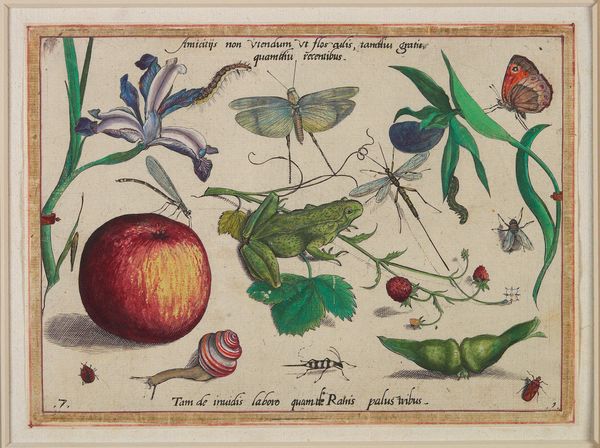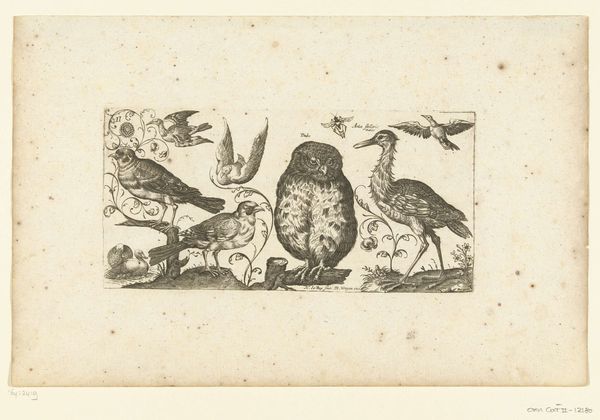
coloured-pencil, print, watercolor
#
coloured-pencil
#
water colours
# print
#
mannerism
#
figuration
#
watercolor
#
coloured pencil
#
naive art
Dimensions: 6 1/2 x 8 5/8 in. (16.51 x 21.91 cm) (plate)
Copyright: Public Domain
Jacob Hoefnagel made this engraving, "Fert Aestas flores," sometime between the late 16th and early 17th century. Hoefnagel worked during a time of increasing scientific observation, when natural history was becoming a popular pursuit of educated society in Northern Europe. The meticulous detail here reflects the importance of empirical observation. However, this image isn’t just a straightforward depiction of nature. Look at the composition, the careful arrangement of specimens. The artist is not only observing the natural world, but also organizing it according to aesthetic principles. This print comes from a larger publication, a pattern book for other artists to use as a reference. These books were part of an emerging art market, tied to the development of print culture, the rise of a merchant class, and new systems of artistic patronage. To understand Hoefnagel's work fully, we might consult early scientific treatises, botanical illustrations, and inventories of collections from this period. The meaning of art is always contingent on its historical and institutional context.
Comments
No comments
Be the first to comment and join the conversation on the ultimate creative platform.
